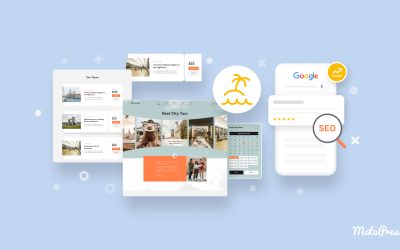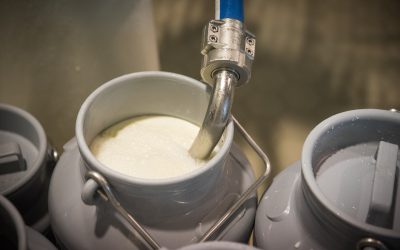Table of Contents
- 1 Understanding Tourism SEO
- 2 What is Tourism SEO?
- 3 The Importance of Tourism SEO
- 4 How Does Tourism SEO Work?
- 5 Keyword Research for Tourism SEO
- 6 On-Page Optimization for Tourism SEO
- 7 Off-Page Optimization for Tourism SEO
- 8 Local SEO for Tourism Businesses
- 9 Mobile Optimization for Tourism SEO
- 10 Technical SEO for Tourism Websites
- 11 Monitoring and Analytics for Tourism SEO
- 12 Content Marketing for Tourism SEO
- 13 Conversion Optimization for Tourism Websites
So you’ve finally decided to take the plunge and delve into the world of tourism SEO. This article will give you a brief overview of what tourism SEO is all about and why it is essential for businesses in the travel industry.
Whether you own a hotel, run a travel agency, or manage a tour company, understanding how search engine optimization can boost your online presence and attract more visitors to your website is crucial in today’s competitive market.
So grab a cup of coffee and get ready to discover the key strategies and tips to make your tourism business shine in the virtual world.
Power your website with SEO Services
Understanding Tourism SEO
Tourism SEO, also known as search engine optimization, is the practice of optimizing a tourism website to improve its visibility and rankings on search engine results pages (SERPs). This is crucial for tourism businesses to attract more organic traffic, increase brand visibility, and ultimately drive more bookings and conversions.
What is Tourism SEO?
Tourism SEO involves various strategies and techniques aimed at improving a website’s visibility in search engine results. It focuses on optimizing the website’s content, structure, and technical aspects to make it more appealing and relevant to search engines. By optimizing the website, tourism businesses can improve their chances of appearing higher in search results when potential tourists search for related keywords.
The Importance of Tourism SEO
Tourism SEO is essential for the success of any tourism business in today’s digital landscape. With the increasing competition in the tourism industry, having a well-optimized website can make a significant difference in attracting potential tourists. By appearing higher in search results, tourism businesses have a better chance of capturing the attention of their target audience, driving traffic to their website, and ultimately increasing bookings and revenue.
How Does Tourism SEO Work?
Tourism SEO involves multiple aspects that collectively work together to improve a website’s visibility and rankings on search engines. It requires a combination of on-page optimization, off-page optimization, local SEO, mobile optimization, technical SEO, monitoring, analytics, content marketing, and conversion optimization.
Keyword Research for Tourism SEO
Keyword research is a fundamental aspect of tourism SEO. It involves identifying relevant keywords and phrases that potential tourists are using when searching for tourism-related information. By using these keywords strategically throughout a website’s content, businesses can improve their visibility and rankings on search engine results pages.
Identifying Relevant Keywords
To identify relevant keywords for tourism SEO, it’s essential to understand your target audience and their search behavior. Put yourself in their shoes and think about what they would search for when looking for tourism-related information. Consider both generic keywords, such as “best tourist destinations,” as well as more specific long-tail keywords, like “family-friendly resorts in Bali.”
Tools for Keyword Research
There are various tools available to assist with keyword research for tourism SEO. Some popular options include Google Keyword Planner, SEMrush, and Moz Keyword Explorer. These tools provide valuable insights into search volume, competition, and related keywords, helping you make informed decisions about optimizing your website’s content.
Long-Tail Keywords for Tourism SEO
Long-tail keywords play a crucial role in tourism SEO. These are longer and more specific search phrases that are typically less competitive but highly targeted. By incorporating long-tail keywords into your website’s content, you can attract a more relevant audience and increase your chances of conversions.
On-Page Optimization for Tourism SEO
On-page optimization focuses on optimizing various elements within a webpage to improve its visibility and relevance to search engines. It involves optimizing title tags, meta descriptions, creating high-quality content, and optimizing URLs and heading tags.
Optimizing Title Tags and Meta Descriptions
Title tags and meta descriptions are essential elements of on-page optimization. The title tag appears as the main heading in search results, and the meta description provides a brief summary of the webpage’s content. By optimizing these elements with relevant keywords and compelling descriptions, you can improve click-through rates and attract more organic traffic to your website.
Creating High-Quality Content
High-quality content is a vital component of on-page optimization for tourism SEO. By creating informative, engaging, and relevant content, you not only provide value to your audience but also increase your chances of ranking higher in search results. Focus on creating content that answers common questions, provides useful tips, and showcases your expertise in the tourism industry.
Optimizing URLs and Heading Tags
Optimizing URLs and heading tags contributes to the overall on-page optimization of your tourism website. Ensure that your URLs are descriptive, concise, and contain relevant keywords. Additionally, use heading tags (H1, H2, etc.) to structure your content and make it more user-friendly and easily scannable by search engines.
Off-Page Optimization for Tourism SEO
Off-page optimization involves activities that take place outside of your website to improve its visibility and authority in search engine rankings. It includes building backlinks, leveraging social media marketing, and utilizing influencer marketing.
Building Backlinks for Tourism Websites
Backlinks are links from other websites that point back to your own website. They are a crucial factor in determining a website’s authority and credibility. By actively building high-quality backlinks from reputable and relevant websites within the tourism industry, you can improve your website’s visibility and rankings on search engines.
Social Media Marketing for Tourism SEO
Social media marketing is an effective strategy to boost your tourism website’s visibility and engagement with your target audience. By creating and sharing compelling content, engaging with users, and utilizing relevant hashtags, you can attract more visitors to your website and improve your chances of ranking higher in search results.
Influencer Marketing for Tourism SEO
Influencer marketing involves collaborating with influential individuals in the tourism industry who have a significant online following. By partnering with these influencers and having them promote your tourism business, you can expand your reach, gain credibility, and attract more organic traffic to your website.
Local SEO for Tourism Businesses
Local SEO focuses on optimizing a tourism business’s online presence to attract local customers. It involves optimizing Google My Business profiles, managing online reviews, and utilizing local keywords.
Optimizing Google My Business Profile
Optimizing your Google My Business profile is crucial for local SEO in the tourism industry. Ensure that your profile is complete, accurate, and up-to-date with relevant information such as your business name, address, phone number, website, and operating hours. Also, encourage satisfied customers to leave positive reviews on your Google My Business page.
Managing Online Reviews
Online reviews play a significant role in influencing potential tourists’ decisions. Encourage customers to leave reviews on platforms such as Google, TripAdvisor, and Yelp. Respond to both positive and negative reviews promptly and professionally, showing your commitment to providing excellent customer service.
Utilizing Local Keywords
Local keywords are vital for local SEO in the tourism industry. Incorporate location-specific keywords into your website’s content, such as the name of your city, region, or popular tourist attractions nearby. This helps search engines understand the geographical relevance of your website and improves your chances of appearing in local search results.
Mobile Optimization for Tourism SEO
Mobile optimization is crucial for tourism SEO due to the increasing use of smartphones and tablets for travel research and bookings. It involves ensuring that your website is mobile-friendly, has responsive design, and offers fast page speed.
Importance of Mobile-Friendly Websites
Having a mobile-friendly website is essential as it provides a seamless user experience for visitors accessing your site on mobile devices. If your website is not optimized for mobile, it can lead to high bounce rates and a negative impact on your search engine rankings.
Responsive Design and Page Speed
Responsive design ensures that your website adjusts automatically to fit different screen sizes and resolutions. This makes it easy for users to navigate and access your content, regardless of the device they are using. Additionally, optimizing your website’s page speed improves user experience and reduces the chances of potential tourists leaving your site due to slow-loading pages.
Mobile-Focused Content
Creating mobile-focused content involves tailoring your website’s content to cater to the needs and preferences of mobile users. This includes utilizing shorter paragraphs, bullet points, and concise headings to make it easier for users to read and digest information on smaller screens.
Technical SEO for Tourism Websites
Technical SEO focuses on optimizing the technical elements of your tourism website to improve its visibility and ranking in search engine results. It includes optimizing website structure and navigation, utilizing XML sitemaps and robots.txt files, and implementing schema markup.
Having a well-structured and easily navigable website is crucial for technical SEO. Ensure that your website has a logical hierarchy, with categories and subcategories that make it easy for both users and search engines to find and understand your content. Use clear and descriptive navigation menus to guide visitors throughout your website.
XML Sitemap and Robots.txt
An XML sitemap is a file that lists all the URLs on your website and helps search engines understand the organization of your content. Submitting an XML sitemap to search engines like Google and Bing can improve their ability to crawl and index your website effectively. Additionally, utilizing a robots.txt file allows you to specify which pages search engines should or should not crawl.
Schema Markup for Tourism Websites
Schema markup is a form of structured data that helps search engines understand and interpret your website’s content better. By implementing schema markup, you can provide search engines with additional context about your tourism business, such as your location, contact details, reviews, and ratings. This can enhance your website’s visibility in search results and increase the likelihood of attracting organic traffic.
Monitoring and Analytics for Tourism SEO
Monitoring and analytics play a crucial role in measuring the effectiveness of your tourism SEO efforts. By using tools like Google Analytics, tracking key performance indicators (KPIs), and monitoring rankings and traffic, you can make data-driven decisions and continuously optimize your website for better results.
Using Google Analytics for Tourism Websites
Google Analytics is a powerful tool that provides valuable insights into your website’s performance. It allows you to track various metrics, such as the number of visitors, traffic sources, bounce rates, and conversion rates. By analyzing this data, you can identify areas for improvement and make informed decisions to enhance your SEO strategies.
Tracking Key Performance Indicators (KPIs)
Tracking key performance indicators (KPIs) is essential for measuring the success of your tourism SEO efforts. Determine which metrics are most relevant to your goals, such as organic traffic, conversions, or average time spent on site, and regularly monitor them to assess the effectiveness of your optimization strategies.
Monitoring Rankings and Traffic
Regularly monitoring your website’s search engine rankings and traffic is crucial for understanding the impact of your tourism SEO efforts. Keep track of your website’s position in search results for target keywords and analyze any fluctuations in traffic. This can help identify areas that need improvement or opportunities for further optimization.
Get a FREE SEO Audit with BabweSEO
Content Marketing for Tourism SEO
Content marketing is an integral part of tourism SEO. By creating engaging and relevant content, promoting it through social media, and implementing a blogging strategy, you can attract and engage with your target audience, increase your website’s visibility, and drive more organic traffic.
Creating Engaging and Relevant Content
Creating engaging and relevant content is key to capturing the attention of potential tourists. Produce content that addresses their needs, desires, and pain points, and aligns with your tourism business’s offerings. This can include travel guides, destination spotlights, itineraries, tips, and recommendations.
Promoting Content through Social Media
Promoting your content through social media platforms can significantly increase its reach and engagement. Share your blog posts, articles, videos, and other content on platforms such as Facebook, Instagram, Twitter, and Pinterest. Encourage social sharing, engage with your audience, and respond to comments and questions to foster meaningful connections with potential tourists.
Implementing a Blogging Strategy
Blogging is an effective strategy to showcase your expertise, attract organic traffic, and improve your website’s rankings. Create a consistent blogging schedule and cover a range of relevant topics that your target audience is interested in. Optimize your blog posts with appropriate keywords and share them on social media channels to maximize their visibility and impact.
Conversion Optimization for Tourism Websites
Conversion optimization focuses on improving user experience (UX), implementing call-to-actions (CTAs), and testing and optimizing conversion funnels to increase bookings and revenue.
Improving User Experience (UX)
User experience (UX) plays a crucial role in converting website visitors into customers. Ensure that your website is easy to navigate, visually appealing, and loads quickly. Optimize your booking process by reducing the number of steps and providing clear instructions. Additionally, make sure your website is mobile-friendly for users accessing it on smartphones and tablets.
Implementing Call-to-Actions (CTAs)
Strategically placing call-to-actions (CTAs) throughout your website can significantly improve conversions. Use compelling and action-oriented language to prompt visitors to take specific actions, such as booking a hotel, subscribing to a newsletter, or downloading a travel guide. Ensure that your CTAs are easily visible, prominently displayed, and lead visitors to conversion-focused landing pages.
Testing and Optimizing Conversion Funnels
Testing and optimizing conversion funnels allows you to identify areas for improvement and optimize the user journey. Analyze user behavior, track conversion rates, and identify potential bottlenecks or barriers that may hinder conversions. Test different layout variations, content elements, and CTAs to determine which combinations are most effective in driving bookings and increasing revenue.
In conclusion, tourism SEO is crucial for attracting and engaging potential tourists, increasing brand visibility, and driving more bookings and conversions. By implementing various optimization strategies, including keyword research, on-page and off-page optimization, local SEO, mobile optimization, technical SEO, monitoring and analytics, content marketing, and conversion optimization, tourism businesses can enhance their online presence and maximize their chances of success in today’s competitive digital landscape.














